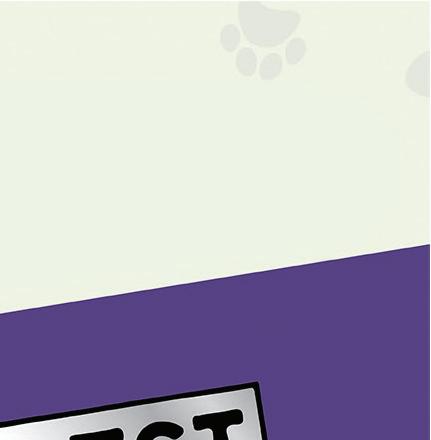











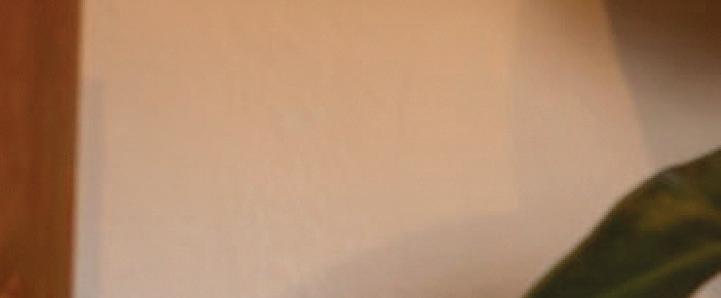




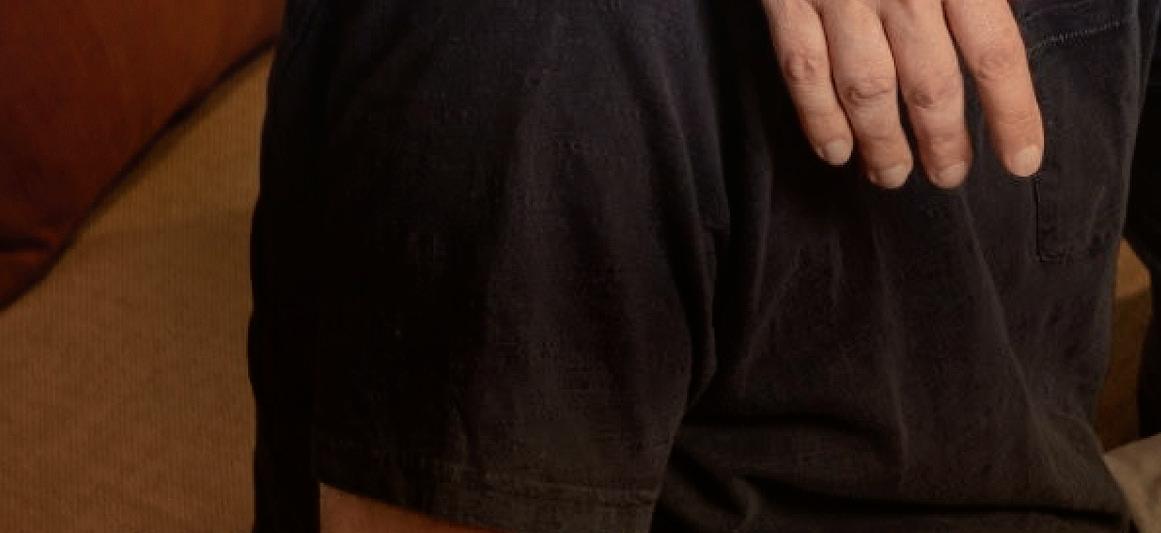
































Garbageisamanufacturedproduct,created whenotherwiserecoverableresourcesare mixedandmashedtogether.Mostroomsin everybuildingin thewholecountry haveabasket wherethis manufacturing begins.Discarded resourcesareput inonebyone, thendumpedinto alargerbin,and thenintoatruck withamore modernbodybasedonthisone.A hydraulicpistonsmasheseverything together.Theobjectiveistopackinmore cargobeforethetruckhastobedrivento whereitcandumpontotheland,tobe coveredina“sanitary“way.Liquidsleach outandmaketheirwayintotheplanet's
water—eventually.These“sanitary” methodsoffillingtheland(hence“sanitary landfills”)alsoprovideforanaerobic decompositionof organicmaterials –whichmakes methane.


Landfillsare thelargest human-created sourceof methane.Inthe shortterm methaneis 80-100times morepowerfulthancarbondioxideto warmtheplanet.
Ifyou'renotforZeroWaste, howmuchwasteareyoufor?
NASA'sAstronomyPictureof theDayfromFebruary12, 2002,coloredthemethanein theEarth'satmospheregreen, andananimationshowedhowit spinstothepoles.NASAsaid, “Methane(CH4)issecondonly tocarbondioxide(CO2)in creatingawarminggreenhouse effect…. ThelargestabundancereleasedbytheUS…is createdwhen anaerobic bacteriabreakdowncarbon-based garbage inlandfills.” [Emphasisadded.]



UrbanOrehasbeensalvagingforreuseinBerkeley since1981.Wehave3acresofsecondhandgoods, open360daysayearuntil5:00PM,900MurraySt. near7thxAshby.Comeshop.
ASSOCIATE PUBLISHER
Karen Klaber
EDITOR
Samantha Campos
COPY EDITOR
Suzanne Michel
CONTRIBUTORS
Jeffrey Edalatpour
Lou Fancher
Janis Hashe
Brooke Mohiuddin
David R. Newman
Daniel O’Donnell
j. poet
PRODUCTION OPERATIONS MANAGER
Zk Bradley
CREATIVE SERVICES PRODUCTION MANAGER
Deb Fisher
SENIOR DESIGNER
Jackie Mujica
GRAPHIC DESIGNER
Elena Razgonov
EDITORIAL DESIGNER
Phaedra Strecher Heinen
ADVERTISING DIRECTOR
Lisa Santos
ADVERTISING ACCOUNT MANAGERS
Danielle McCoy
Ben Grambergu
Lynda Rael
Sharon Zuberbier
CEO/EXECUTIVE EDITOR
Dan Pulcrano
DIRECTOR OF CREATIVE SERVICES
Cindy Couling





When we think of style, fashion often comes first to mind. And as of this writing in mid-October, it’s hard not to think of the recently departed Diane Keaton—actress, icon and master of the turtleneck—whose singular blend of wit, warmth and eccentric charm made her a timeless symbol of personal authenticity. Keaton’s “style” wasn’t just about what she wore; it was how she inhabited the world, unapologetically herself.
That idea—style as self-expression, substance and spirit—threads through this month’s issue.
We start with Irish designer Margaret O’Leary, who launched her brand in San Francisco in 1990 and now operates 13 stores nationwide, including her beloved Fourth Street boutique in Berkeley. Her collections of knitwear and natural-fiber essentials embody a
Jeffrey Edalatpour writes about arts, food and culture for SF Weekly, Metro Silicon Valley, East Bay Express and KQED Arts.
Lou Fancher has been published in Diablo Magazine, Oakland Tribune, InDance, San Francisco Classical Voice, SF Weekly, WIRED.com and elsewhere.
FORM MEETS FEELING
cover stars, Laleh and

refined simplicity rooted in conscious consumption and community.
Also on Fourth Street, Standard & Strange reimagines menswear through craftsmanship and authenticity. Founder Jeremy Smith draws inspiration from American workwear and Japanese design traditions, creating garments meant to last a lifetime.
For those looking to refine their travel style, we’ve gathered advice from a travel blogger and local retailers on curating a wardrobe that’s stylish, versatile and comfortable—proving that practicality and polish can coexist beautifully on the road.
Back home in Oakland, we meet Laleh and Alessandro Latini, the couple behind SOBU, a design-forward furniture and décor shop in Rockridge. Their aesthetic—what they call “warm modern”—blends Scandinavian simplicity with California ease and a deep
Janis Hashe regularly contributes to the East Bay Express and other Bay Area publications.
Brooke Mohiuddin is a writer and photographer for portraits, events and concerts in the Bay Area. She is currently a high school senior.
commitment to local craftsmanship.
And because connecting with nature never goes out of style, we check in with Heather Taylor, who, after closing her Outside School/Teach Outside program, continues to inspire families with creative, nature-based learning experiences
We also add a touch of glamour with the reopening of Crustacean, Helene An’s reimagined San Francisco restaurant on Pine Street, serving elevated Vietnamese fare in an elegant setting. Plus, we dive into the growing world of plant-based milks, exploring their expanding culinary possibilities.
Finally, we honor two local figures: Oakland singer-songwriter
Brad Brooks, who shares his powerful story of resilience and collaboration with Wayne Kramer of MC5, and the late Ann Fagan Ginger, a lifelong advocate for civil and human rights.
— Samantha Campos
David R. Newman is a regular contributor to Tri-City Voice and Milpitas Beat, and has been featured on CraftBeer.com.
Daniel O’Donnell is the co-owner and operator of an organic landscape design/build company in Fremont.
j. poet has been writing about music for most of his adult life and has interviewed a wide spectrum of artists, including Leonard Cohen, Merle Haggard and Godzilla.
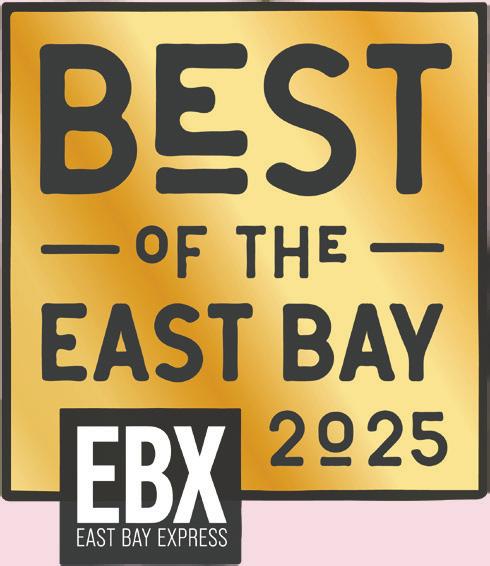






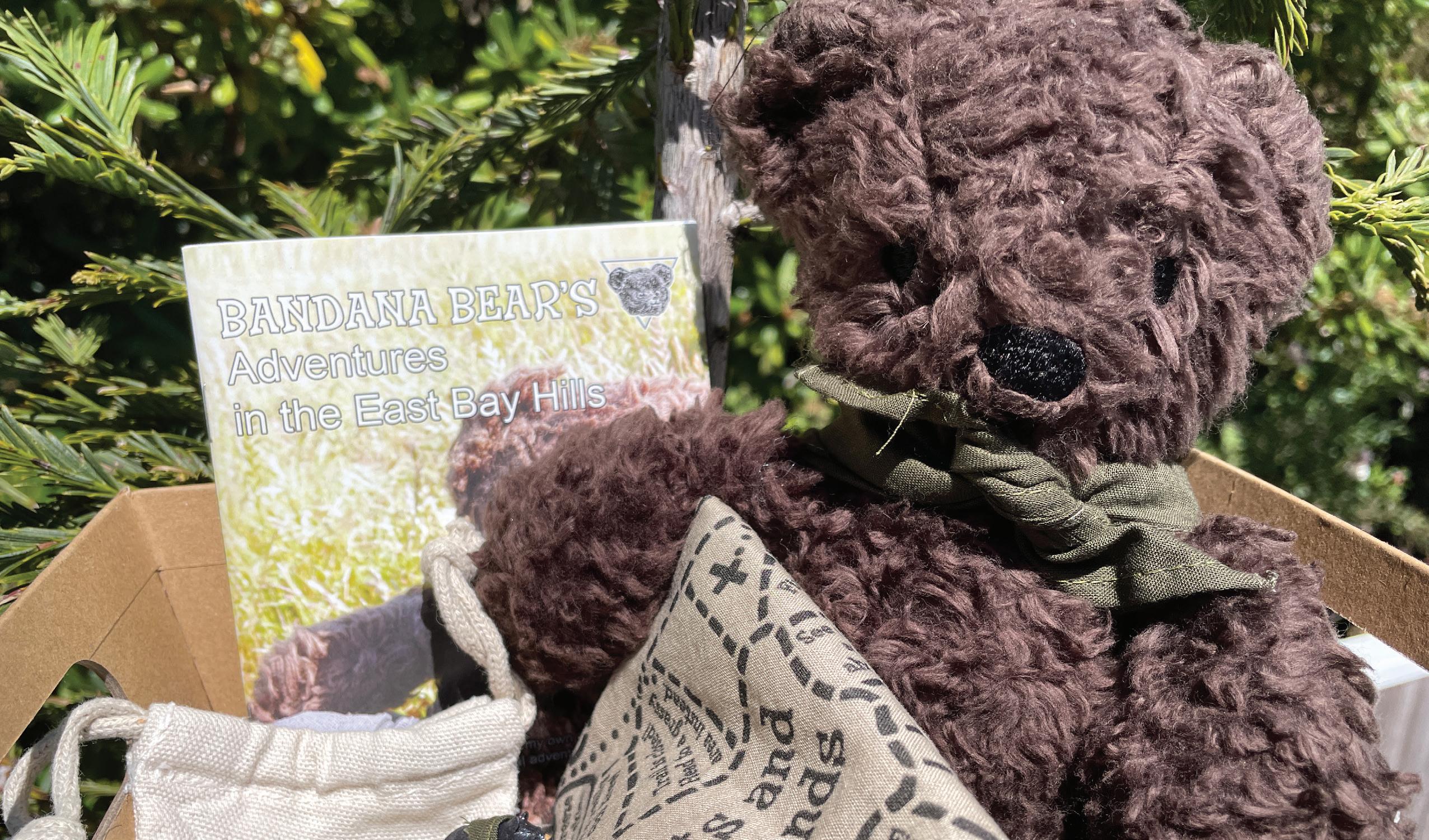
Multiple East Bay families were disappointed to learn that Heather Taylor had made the tough decision to close Outside School/Teach Outside, the program she created and ran in Richmond’s Alvarado Park. The last camp ended Aug.1, Taylor said. Costs, including park fees and especially insurance, were just too high, despite enthusiastic reviews from both parents and kids.
BY Janis Hashe
Children attending Outside School explored the park with Taylor, learning about the habitats, native animals (and the occasional cow) and absorbing lessons about how to protect the land and water. Taylor recalled an incident in which incensed students discovered a boot in the park’s stream, and a strategy had to be evolved to extract it.
But all is not lost for the families who want to continue some of the many
Outside School activities, or for those wanting to discover them now. Taylor is maintaining access to her “Nature Helper” kit, in which kids volunteer to spend 10 hours in a calendar year “helping nature.” Participants choose and record their own activities, which need to take place outside those of their public or private school. The package includes an iron-on badge, identifying the child as a Nature Helper. Even though television nature programs

Children attending Outside
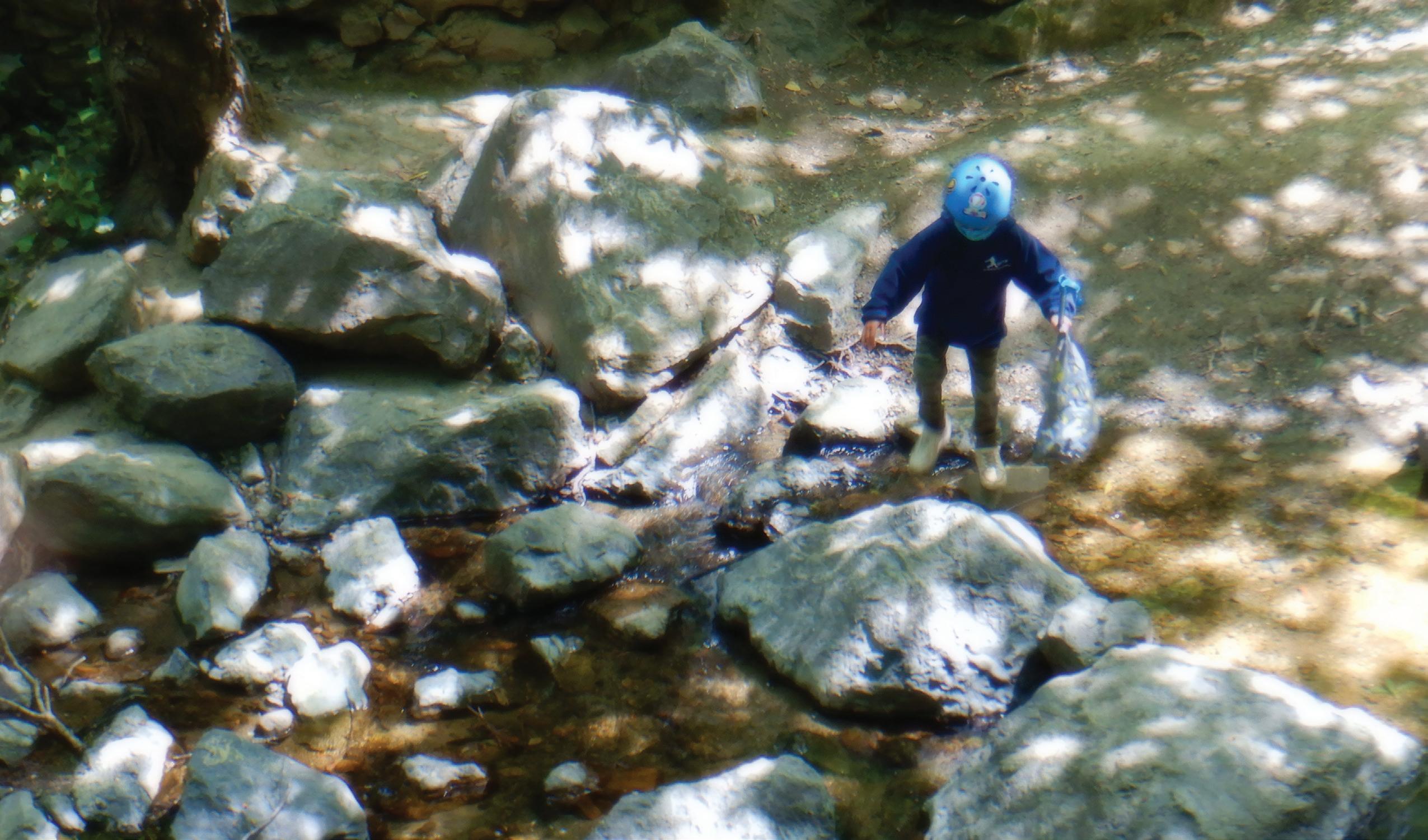
often focus on exotic animals and locales, “There is a lot of nature here, where we live,” said Taylor, “and it’s just as amazing.” A few suggestions: Nature Helpers could join a beach clean-up, do litter pick-up or assist in pulling weeds, such as invasive Cape ivy and French broom, meanwhile observing the creatures that may be nearby.
Another option for families is “Bandana Bear,” who, according to Taylor, “is an American black bear (Ursus americanus) who loves having fun and making discoveries outside… Bandana Bear lives a healthful life exploring the East Bay hills, enjoys beautiful vistas, makes and eats healthy food, helps the environment, practices naturalist skills and takes in various mindfulness practices.”
The stu ed toy “is the perfect size for cuddling, and their floppy nature allows them to fit perfectly into any backpack or bag. They love nestling in arms and laps,” explains Taylor’s website. The bears are made by people in underserved communities by Bears for Humanity, and sport a cotton bandana designed by a close friend of Taylor.
The bear itself is only one of four possible parts: Taylor has also designed
a game, based on adventures actually had during Outside School. It’s played on a “bandana,” designed and printed by Taylor’s husband, Strephon. The game set also includes six game pieces, including a tiny Bandana Bear. The other five pieces are animals that can be found in the East Bay.
“There are four types of habitats that you might find in the East Bay,” she explained. In the game, the six characters are moved around, landing on spaces such as, “See your favorite animal. Jump ahead two spaces” and “Write and draw for a little while.”
The third Bandana Bear piece is a book by Taylor, Bandana Bear’s Adventures in the East Bay Hills. Taylor described it as a “make my own decisions” book based on real adventures at Outside School.” Though aimed at ages three and up, she has seen it read and enjoyed by all ages, including adults.
Last but not least is the universal, fill-inyour-own dates “Through the Year with Bandana Bear” calendar, again, based on activities at Outside School. Kids and families can use it to fill in planned and completed outdoor activities. Bandana Bear is pictured in many fun settings, with prompts such as, “What do you like to do in January?”
Taylor’s background is her inspiration for
all her projects. Her mother worked for the California State Parks system, and the family moved all over the Bay Area as she was transferred from park to park. Taylor spent most of her childhood outside, her native curiosity steering her towards the sciences. She worked in the herpetology labs at UC Davis, then spent time at Cal Berkeley, where she prepped biology labs.
Working for an outside school in an elementary-school afterschool program prompted her to open Outside School/ Teach Outside, and she’s proud of what she accomplished with it.
“I have [former students] now in conservation jobs and environmental law,” she said. “My biggest accomplishment was providing kids with time and space to figure things out for themselves.”
Would she ever consider re-opening Outside School? She laughed, and noted that it would take a big benefactor to make the equation work. But, as we know from nature, the solution to every equation is out there. Meanwhile, there’s Bandana Bear.
Access information about Nature Helper and all the Bandana Bear options at teachoutside.org/bandana-bear.







Brad Brooks of Oakland discusses his battle with cancer and his musical journey, including fronting MC5
BY j poet
Oakland singer, songwriter and bandleader Brad Brooks was at the dentist, having his teeth cleaned, when a dental assistant noticed a bulge on the side of his neck. Further investigation established that the lump was cancer. He had surgery and radiation treatments, but it took a toll on his voice and his psyche.
“I was told that there’s a 90% cure rate with this kind of cancer,” Brooks noted, “but you also go through hell for a year. After the surgery and radiation, I lost 40 pounds. I kept singing for about a month and a half, but after day 12 of getting radiation, I stopped for a couple of months. I could hardly swallow or talk.
“As I was recovering from cancer
and processing it, I wrote a couple of songs about my journey: ‘Burn It O ’ and ‘Scared I Was,’” said Brooks. “They appear on the album I released a few years back, God Save the City. It took me a little over a year to get back on track.
My ‘new’ voice helps when I’m belting out the rock and blues tunes, but for the more delicate songs, it took a toll.”
After he’d finished writing the songs for God Save the City, Brooks went into the studio with his band and recorded them. “The band played live, all in the same room, with maybe three takes, max,” he said. “We had a blast making it. Adam Rossi, our keyboard player, produced it and got the best out of me vocally. At the beginning, my voice was still a bit compromised from my cancer. As we
BY

got farther along, my voice got stronger, so he was really great with me, as well as having a great touch with everyone else in the band.”
The music on the album covers a wide swath of styles. There’s rock, funky R&B, ballads, pop tunes and soul. “Musically, I’ve always had a pretty broad palette, but I knew I wanted this one to be my soul record,” he admitted. “I’ve always been a soulful rock singer, but I felt like I’d only occasionally touched on that part of my style. I needed to go further into it.”
With the help of the band—guitarists Erik Schramm and Pie Fiorentino, drummer Andrew Gri n, bass player Joey DiBono, percussionist and backing vocalist Vicki Randle and backing singer Loralee Christensen—Brooks captured the energy of a live performance. “I wanted it to be as raw and real as possible. It’s also a very political record, and I stand firmly behind it,” he noted.
The album kicks o with the title track, a rocker driven by the rhythm section of Gri n and DiBono and a vocal from Brooks, that often slides up into the falsetto range. “It’s an anti-gentrification anthem about what I was witnessing in Oakland, and the Bay Area,” Brooks said. “Unfortunately, with what’s going on today—racism, Covid, Trumpism and other things—it feels like we’re headed down that dark road again.”
A slow, R&B bassline introduces “Why Do You Hurt,” a song that expresses the bewilderment people experience when they pick a fight with a loved one. Randal
and Christensen supply wordless, gospeltinted harmonies that add emotional depth to Brooks’ lead vocal.
Since he releases his music on his own, Brooks promotes his albums by himself. To that end, he played a show with Rossi at the Sweetwater Music Hall in Mill Valley. It was a book release party for Grace, a graphic novel about Je Buckley, by Ti anie DeBartolo. “I met Wayne Kramer, guitar player for the MC5,” he said. “When I told him about my cancer, he reached up to his neck and showed me his cancer scar. We bonded, stayed in touch and started writing songs together.”
Kramer made demos of the songs he was writing with Brooks. He showed them to some of his music business connections, including producer Bob Ezrin (Alice Cooper, Lou Reed, Phish). Ezrin said he’d like to make an MC5 record. “Wayne called me up,” Brooks said. “He told me about the record and asked me to sing lead on the songs we’d written.”
They went into the studio with Don Was (Elton John, Garth Brooks, Bob Dylan) on bass, drummer Abe Laboriel (Paul McCartney), Kramer on guitar and Brooks on lead vocals. “We cut 15 songs in four days,” he said. “We were all in the studio together, playing live.”
After the basics were down, some of Kramer’s friends came in to add parts, including Tom Morello (Rage Against the Machine), Slash (Guns N’ Roses), William Duvall (Alice in Chains) and Dennis Thompson, the original MC5 drummer.
‘We don’t know what we’re going to call it yet, but I can’t wait to get those songs out and play them live.’
—BRAD BROOKS
The result is Heavy Li ing, 13 hard rocking, politically driven tunes, full of the funk, punk and metal guitar pyrotechnics that made the MC5 so influential on the bands that followed in their wake.
While they were waiting for the album to be released, they did a short, sold-out eight city tour. Kramer died of pancreatic cancer in February of 2024, nine months before the album came out. “It was a gut punch,” Brooks said. “He was fearless, and we need his energy and wisdom now, more than ever.” Brooks channeled his grief into promoting the Heavy Li ing record and the music he made with Kramer.
For an upcoming gig at the Ivy Room in Albany, Brooks will be backed by most of the musicians he worked with on God Save the City. “I’m excited to play with them again,” he said. “I was in the middle of making the MC5 record and then touring with Wayne since we last played out, so it’s been awhile since we got together.”
Brooks said he’s currently working on a new collection. “I’ve been writing with a friend of mine, Tom Ayres. We’ve finished a record’s worth of material that I’m extremely excited about,” he noted. “Tom’s one of the most interesting guitar players I know. We don’t know what we’re going to call it yet, but I can’t wait to get those songs out and play them live.”
Brad Brooks and his band will be playing the Ivy Room on Nov. 21 at 8pm, with Anna Hillburg and Bye Bye Blackbirds supporting. Listen to ‘God Save the City’ at bradbrooks. bandcamp.com. ‘Heavy Lifting,’ his album with the MC5, can be heard on Spotify and other digital platforms.









BY Je rey Edalatpour


PINE STREET
Helene An’s second San Francisco restaurant is a welcome addition to a downtown that’s still in recovery mode.


The legend of Thanh Long’s garlic noodles and roasted crab preceded my arrival in the Bay Area by several decades. But soon enough, friends and acquaintances would mention a restaurant in the Sunset, the San Francisco neighborhood that seemed foggy and faraway even from my first apartment in the Lower Haight. The fact that it was out by the beach made it even more intriguing, a kind of Mists of Avalon situation.
Helene An, the inventor of Thanh Long’s famous noodle dish, is now hailed as a pioneer of Asian fusion dishes. Her adaptation of Vietnamese ingredients combined with Americans’ love of pasta inspired Bay Area chefs to imitate and attempt their own versions of the dish. Those in the know pay homage to the fact that An made them first.
After establishing Thanh Long in the 1970s, An, with the help of her five daughters, went on to launch a restaurant group. While Thanh Long is House of An’s anchor business in the Bay Area, the group also runs three restaurants in Southern California. And, with the recent reopening of Crustacean on Pine Street, An’s second San Francisco restaurant is a welcome addition to a downtown that’s still in recovery mode.
When I walked from the Embarcadero BART and MUNI station to Crustacean for an early dinner, I had a little time to kill before the reservation. I decided to stroll through the largely deserted Embarcadero Center. All the shops were closed for the night. Four baseball fans, pre- or post-game, wandered around in their colorful jerseys. And one man held a giant Chinese lion’s mask on his shoulder on his way to a parade.
But I found the boarded-up movie theater, with its neon lights dimmed, distressing and vaguely apocalyptic. I’d seen so many films there over the years. Now the memories of those evenings seemed similarly worn down and faded.
Stepping inside Crustacean’s antechamber, I felt an instant sense of relief. The interior is deluxe, transportive and, best of all, soothing. People were there to celebrate happy occasions together, not to party. If I felt oppressed by the chaos of an abandoned world around the corner, Crustacean reminded me that civilization still exists, in some form or other, around the dinner table. The décor, by JH2 Architects, reminded me of the 2021 Empress Boon revamp »

in nearby Chinatown. Everything shimmers, evoking moonlight rippling across the surface of a silvery emerald sea.
Monique An, the operations manager at House of An’s San Francisco restaurants, told me that the first iteration of Crustacean opened on Polk Street in 1991. That location closed this July, only days before the new space opened on Pine Street. When comparing Thanh Long to Crustacean, An said that the recipes, all created by her mother, are more elevated and whimsical. Served in a succulent lemongrass tomato jus, the wagyu beef dumplings definitely qualify as elevated. Whimsy appears in a cigar box, as spring rolls and in a rather stunning new take on a caesar salad. Kenneth Lew, Monique’s husband and collaborator, brought a cigar box to our table. When he opened the lid, smoke drifted out to reveal “tuna cigars.” Perfectly formed cubes of poke tuna had been wrapped inside of an elegantly constructed, thin, crispy shell. One side,
like the lit end of a cigar, was daubed with a ring of caviar.
On competitive cooking shows, aspiring chefs will often go to a great deal of trouble to smoke a dish, with minimal to no results. In this case, the kitchen has infused the tuna cigars with such a powerful dose of smoke that even the fussiest of TV judges would be able to detect its presence.
Caviar, that denotation of luxury, also crowns a quartet of langoustine spring rolls. Visually, the dark fish eggs looked like pretty baubles, miniature black pearls that dress up the face of something plain. When dipped in a sweet citrus chili sauce, the roll itself, delicate and flaky, was scrumptious enough to stand on its own without them. I could have eaten a second order.
The kohlrabi caesar salad photographs well and will easily attract attention in social media circles. The vegetable’s stem is peeled into vertical swirls that are then
stacked side by side on the plate. Kohlrabi, generally, is crunchy but rather bland and in need of the furikake spices and salty flavor of Crustacean’s parmesan “snow.”
A crispy plate of branzino was less stunning to look at but utterly delicious. When a piece of fish is cooked to perfection, it tastes like a small miracle. The garlic lemon sauce, reflecting some of An’s French cooking influences, reminded me of the lemon pepper sauce at Pho 84, my favorite Vietnamese restaurant in Oakland. They make it to accompany their caramelized hoisin chicken.
Monique An said she wasn’t that familiar with Vietnamese restaurants in the East Bay. The milieus couldn’t be more different, but both of their sauces share a tart, welcome pungency that makes me want to show up for more.
Crustacean, lunch Tue to Thu 11:30am–2:30pm. Dinner starts daily at 5pm (closed on Mon). 195 Pine St., San Francisco. crustaceansfpine.com.

Bentley School is an intellectually curious and inclusive community where teachers embrace the strengths of every student, helping them to achieve their full potential. At Bentley, we believe a culture that balances academic achievement, co-curricular engagement, and socialemotional well-being creates the most transformative student experiences. Please schedule a visit to learn more.
bentleyschool.org

Cognitive decline can steal the past, but it doesn’t have to steal the future. Pioneered to curb the effects of cognitive decline, Circle of Friends® is a unique, evidence-based program for building brain fitness. It was developed by Belmont Village in collaboration with the nation’s top universities and healthcare institutions — and it works. Residents enjoy a rich, therapeutic program of physical and mental activities designed to maintain brain function and build self-esteem.














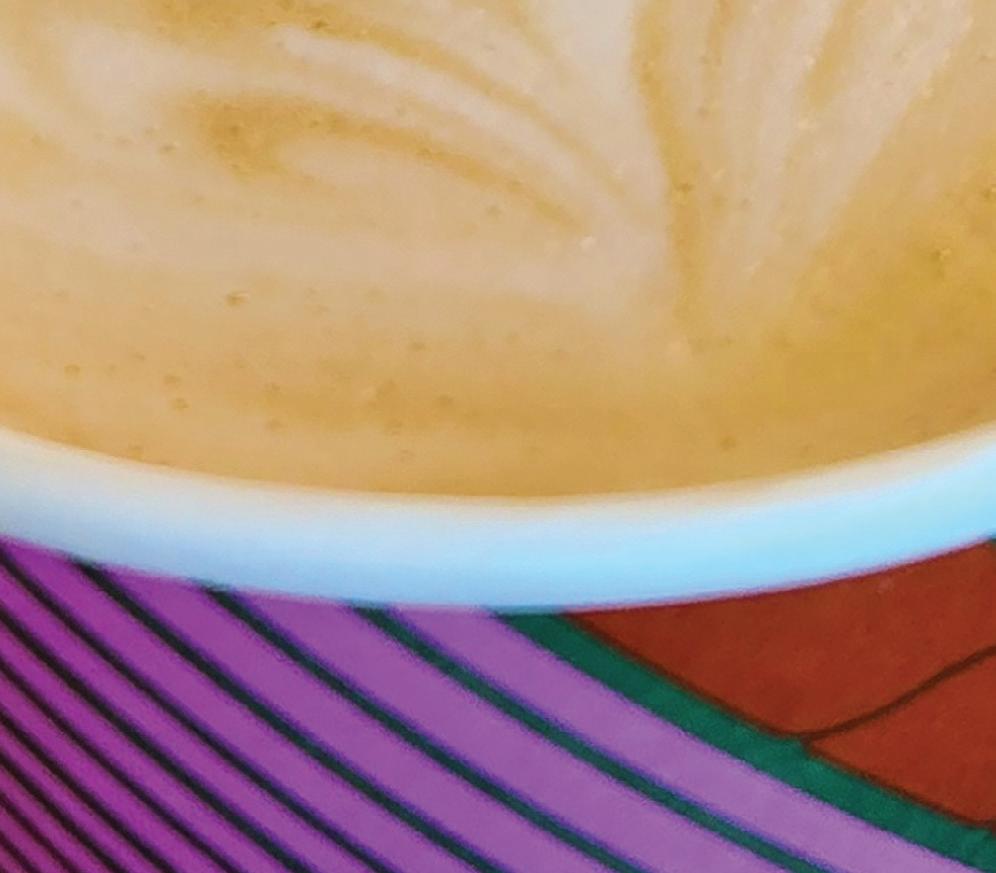


BY Daniel O’Donnell







Perhaps this is the easiest time in history to make food choices based not only on taste, but sustainability, environmental concerns, promoting good health and vegan or vegetarian preferences. One of the fastest growing food markets is that of non-dairy milks.
No one knows exactly how long plantbased milks have been around, but people have been drinking them for centuries. Chinese references to soy milk date back to the first century. Coconut milk became a popular cooking ingredient in Indian and Southeast Asian recipes around 2,000 years ago. Coconut graters dating back to 3,000 B.C. indicate that people in the island regions of Southeast Asia might have been making coconut milk then.
There are references to almond milk throughout the Middle Ages in Europe and the Middle East. Oat milk is one of the newer non-dairy milks. It was invented in Sweden in the early 1990s.
There are just under 20 di erent types of non-dairy milks readily available, produced from di erent plant categories. Almond, pistachio, cashew, macadamia, peanut, walnut and hazelnut milks are made from raw nuts. Flax, hemp and sesame milks are created from non-grass plant seeds. Grains are used to produce oat, rice, spelt and barley milks. Soy and pea milks are made from legumes, and coconut milk is produced from fruit.
Other non-dairy milks produced around the world include brazil nut milk, chickpea milk, lupin milk, banana milk, potato milk and quinoa milk. These milks can be more di cult to purchase stateside. However,


all of these and the milks listed here can be made at home from online recipes.
Many online non-dairy meal recipes are vegan. However, non-dairy milks can be used as a substitute for milk in many non-vegetarian recipes at a 1:1 ratio as well. The type of non-dairy milk to be used as a substitute should be based on levels of proteins, sugars and fats. These can vary from brand to brand, even if they are made from the same plant base. It’s important when cooking or baking with non-dairy milk to read the ingredient label.
Fat content can a ect the final dish’s texture and mouthfeel. Fats are high in caloric energy, and di erent fats have di erent smoke points. These factors need to be considered when substituting non-dairy milk for animal milk. Higher fat content options for non-dairy milks would be: coconut milk, which has the highest; hemp milk, which is high in healthy omega 3s and 6s fats; and cashew milk, which is usually the creamiest of all the non-dairy milks.
Many non-dairy milks have sweetened and unsweetened options. Opting for the unsweetened non-dairy milk is optimal when cooking or baking since most recipes rely on other ingredients for sweetening. However, unsweetened nut milks can bestow a nutty flavor to a dish or baked item, so they can be used when this nutty flavor complements the other ingredients in the recipe.
Di erent non-dairy milks have di erent consistencies. Soy and oat milks are often better for baking since their thickness is close to that of milk. Almond and
rice milk are waterier, which can make sauces and curries less rich and allow the delicate spices to shine, make the texture of quiches and frittatas flu er, and be used to make lighter versions of dishes such as macaroni and cheese, and other creamy casseroles. The di erent consistencies can be used to mimic dairy milk options commonly used in co ee, tea and smoothies.
Froth is an important component in many specialty co ee and tea drinks. Protein, fat and steam are the three items that come together to create a creamy froth. Whole milk is considered the ideal milk for frothing by many baristas, but there are some worthy non-dairy milk candidates as well. Soy milk is the best non-dairy milk for frothing because of its high protein content and neutral flavor. Some non-dairy milk companies

o er special barista blends or editions in which extra protein, stabilizers and sometimes vegetable oil are added to their flagship almond or oat milks to make them frothable.
Egg dishes, pancakes, breads, soups, pasta sauces, mashed potatoes, casseroles, ice cream and baked desserts are just a few of the dishes non-dairy milks can be used in. Experimenting with di erent non-dairy milks in cereal or in co ee or tea can add new flavors to the morning breakfast routine. If non-dairy milks continue to innovate and gain popularity, then someday there might need to be an article explaining what non-plant-based milk is. ❤




How a Bay Area couple built Rockridge’s SOBU—part furniture studio, part community hub, all heart
BY Samantha Campos

Long before they founded SOBU, the design-forward furniture and home décor store on College Avenue in Oakland’s Rockridge district, Laleh (née Zahedi) and Alessandro Latini met as teenagers at Redwood High School in Corte Madera—a pairing that, in hindsight, feels like a design collaboration waiting to happen. They didn’t know it then, but the shared sensibility that would one day define SOBU—warm, curious and built to last—was already taking shape.
Years later, fate staged a cinematic reunion.

The College Avenue store is awash in a palette of honeyed oak and handwoven textiles, punctuated by sculptural lighting, bold wall art and ceramics by local artisans.

«
spark has evolved into one of the East Bay’s most beloved design studios. From their Oakland shop and workspace, the Latinis have cultivated a loyal following drawn to their aesthetic, their ethos and the sense of calm that infuses every inch of their space.
Macy’s and Crate & Barrel taught him the industry ropes—especially sourcing. He traveled everywhere, going to hundreds of factories. But he didn’t always love the end product.
“A lot of the designs were my aesthetic, but the materials weren’t,” says Alessandro. “When it was first prototype and it was in raw wood, I was like, ‘This is gorgeous.’ And then they’d put some hideous finish on it that for some reason everybody wanted. But it was that materiality, just the wood or the raw metal, that was so exciting.”
That tension—between beauty and mass production—sparked SOBU’s founding philosophy: simple, elegant designs made from honest materials. “We both love simple, elegant stuff,” says Alessandro. “But things that also have a sense of humor, they’re not too serious. They’re relaxed and fun.”
The couple describes SOBU’s aesthetic as “warm modern”—a term that neatly captures their design language of clean lines, organic materials and timeless comfort. “To us, that means lots of beautiful wood and natural fabrics,” says Alessandro. “The designs are often rooted in Danish modern, but we like to mix in a little California wabi-sabi with our locally made furniture and crafts.”
SOBU itself reflects that sensibility: a palette of honeyed oak and handwoven textiles, punctuated by sculptural lighting, bold wall art and ceramics by local artisans. Everything feels curated but unpretentious—a home, not a showroom.
In more than a decade of business, SOBU has resisted the urge to overoffer. “A lot of retailers just seem to carry anyone and everyone,” Laleh says. “We’ve only carried our own line of furniture which we design and manufacture, a gorgeous Belgian line and now a new Danish collection. That’s it.”
“Laleh and I both were Vespa riders in high school,” Alessandro says. “I saw a woman pull up, thought maybe that's Lolly (Laleh’s nickname) and left a note in her helmet. Sure enough, she called me back, and we went out on our first date.”
» Both had gone on to study architecture, though eventually each went in different directions: Laleh into graphic design and catalog work for Pottery Barn and Design Within Reach; Alessandro into custom furniture in New York. When a construction project brought him briefly back to San Francisco, he spotted a familiar Vespa.
Fast forward a few decades, and that
After returning permanently to the Bay Area, Alessandro worked as an architect but grew frustrated by slow timelines and limited creative freedom. A stint designing furniture for major retailers like
That Danish partnership has them especially inspired: “We just started working with a new line with really exquisite fabrics and materials that our customers can choose from,” says Alessandro.
“It fits perfectly into our SOBU look and feel—Scandinavian simplicity, elegance in materiality and European craftsmanship,” adds Laleh.




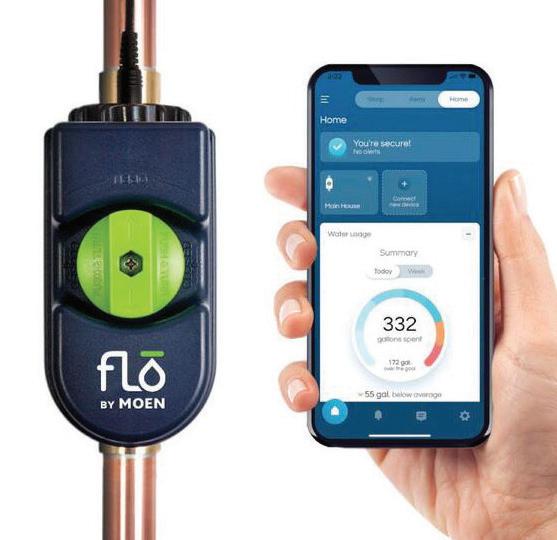





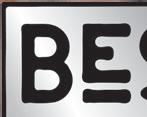


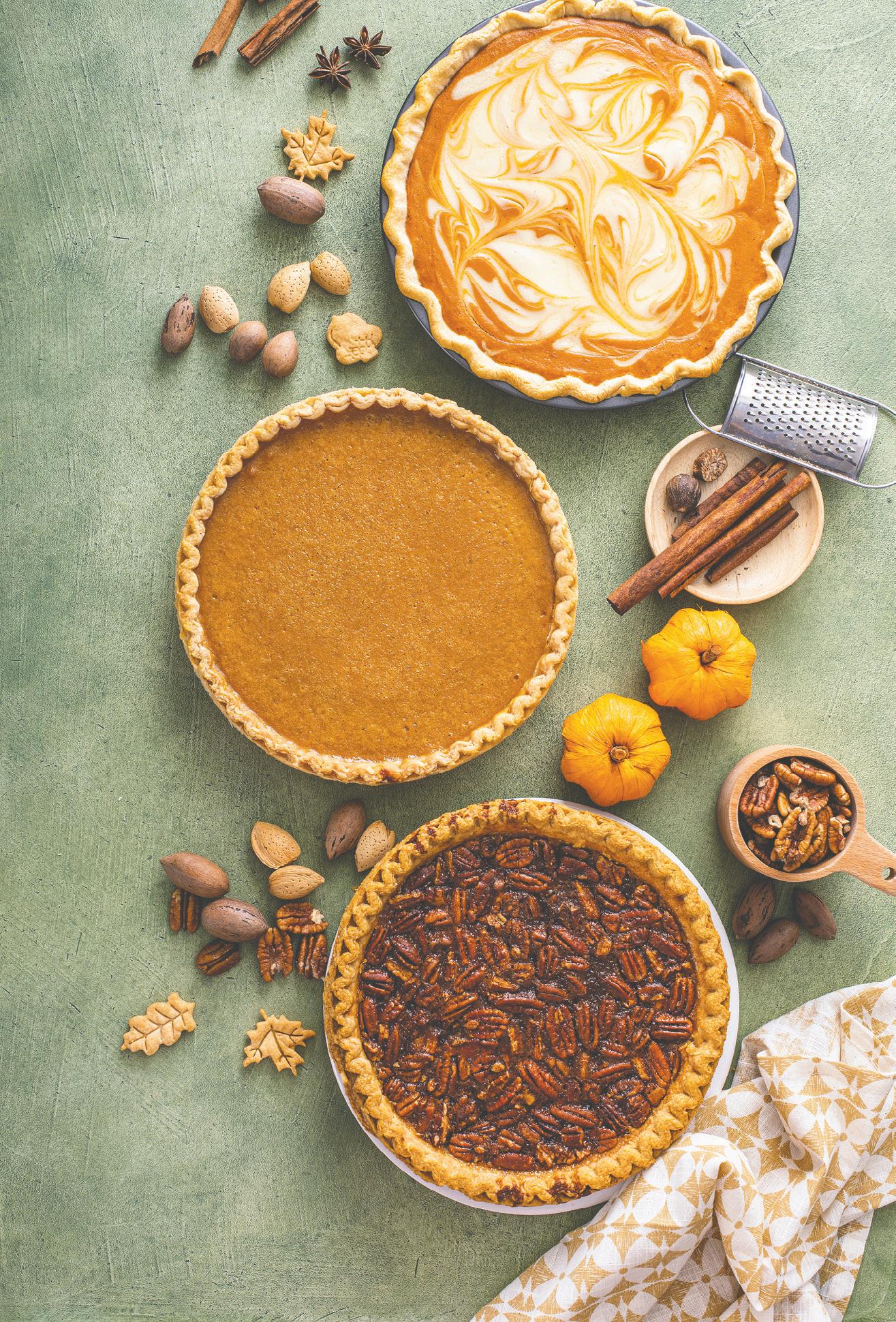










As tactile as their work is, the Latinis also know that in the modern marketplace, design and digital aren’t mutually exclusive. Their online store has become an essential extension of their brick-and-mortar shop—especially during the pandemic.
“People really do buy furniture sight unseen,” says Laleh. “With the natural ebbs and flows of in-person sales, our online shop has helped buoy us through some leaner times.”
During Covid, online sales grew by more than 50%. “It’s been a huge part of our business,” Alessandro says. “Customers find us through our website, and they can research products ahead of time. We also ship furniture all over the country now.”
Still, they liken running an online store to having a second business entirely—“and double, maybe triple the work,” Laleh jokes. “When we first started toying with the idea of a business, the idea was actually: Let’s open a store. I had this image that I would be in the shop and my o ce days would be, happily, behind me. Alessandro would be designing the furniture, and I’d be at the shop, hanging out with customers and making it look beautiful and special.”
Reality, of course, had other plans.
As SOBU grew, so did the list of responsibilities: managing a website, fulfilling orders, handling marketing, coordinating with vendors, and overseeing customer service and warehouse logistics. “The list just kept going,” Laleh says, laughing. “And there I was, back in front of my computer.”
Yet even amid spreadsheets and shipping schedules, the couple’s love for design and community has never wavered. Fortunately, a dedicated team keeps both legs of the business running smoothly. “We’re lucky to have an amazing shop team and customer service team that really power everything we do,” she says.
“For both Alessandro and I, being
‘For both Alessandro and I, being part of our local community here in the East Bay—connecting in real life with real humans face to face—is the most satisfying and enjoyable part of SOBU.’
— LALEH LATINI
part of our local community here in the East Bay—connecting in real life with real humans face to face—is the most satisfying and enjoyable part of SOBU,” says Laleh. “Spending time in the store, we’re reminded constantly of how wonderful our customers are. When challenges arise, this is what always renews our faith in humanity.”
Beyond the furniture, SOBU has evolved into something more than a retail space—it’s a creative community.
The Latinis collaborate with local woodworkers, metal fabricators and artists, from one-o commissions to quarterly art openings featuring Bay Area artists. One recent show brought together more than 25 local lighting designers.
“Our employees are also makers and design lovers, and they help us coordinate these exhibits,” says Alessandro. “We always try to highlight locally made work, and we’re always looking to find new artists and artisans.”
SOBU’s influence now extends well beyond its storefront. Their custom dining chairs, for instance, were recently chosen for a restaurant opening in San Francisco’s Ferry Building.
Looking ahead, the couple plans to expand SOBU’s community role even further.
“We’re hoping to inject lots more creativity into the Oakland space and continue to grow our collaborations with artists and makers,” says Laleh. “There’s a dwindling number of real-life venues for people to experience creativity and human connection. We’re proud to be able to provide that.”
Alessandro agrees. “We see SOBU becoming more and more of a hub for local art and crafts,” he says. “We have so many incredibly talented people in the Bay (Area) who make beautiful things. That’s really what motivates us—beauty and art in our homes.”
For a couple who met as high school kids in Marin, built a life in San Francisco and then the East Bay, and raised their children among the creative energy of their community, SOBU feels like both culmination and continuation—a love story expressed in wood, fabric and human connection.
“We live here, we raised our kiddos here and we earnestly care,” says Laleh. For the Latinis, it’s about building something lasting—something beautiful—together. SOBU, 5451 College Ave., Oakland, 510.817.4787; sobusobu.com.

































































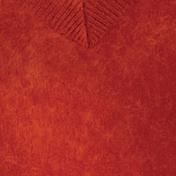


preclude innovation or style
BY Brooke Mohiuddin
Fusing Irish tradition, an innovative spirit and the enthusiasm of its founder, the Margaret O’Leary brand has been loved throughout and beyond the Bay Area for more than 30 years. The label, established by Margaret O’Leary in 1990, opened its first store in San Francisco’s Union Square and now has 13 locations across the country. Nonetheless, the brand stays true to its roots, carefully and independently crafting pieces in small batches from natural fibers. Everything, from their signature knitwear to silky dresses, is made masterfully, embodying classic charm, yet everlasting excitement.
O’Leary, one of 13 siblings born and raised in County Kerr, Ireland, grew up wearing traditional Irish sweaters, hand-knitted by her mother. “I was born with knitting needles in my hands,” she says with a laugh. Historically, the Aran knit sweaters worn by Irish fishers had unique patterns belonging to each family; O’Leary’s mother kept the practice alive, giving each sweater the same cable knit design. Interestingly enough, she admits she doesn’t have any of these sweaters from her childhood.
“I was the second oldest, so I would pass my sweater down to the next one, then the next one, then the next one,” says O’Leary. “By the time kid number five
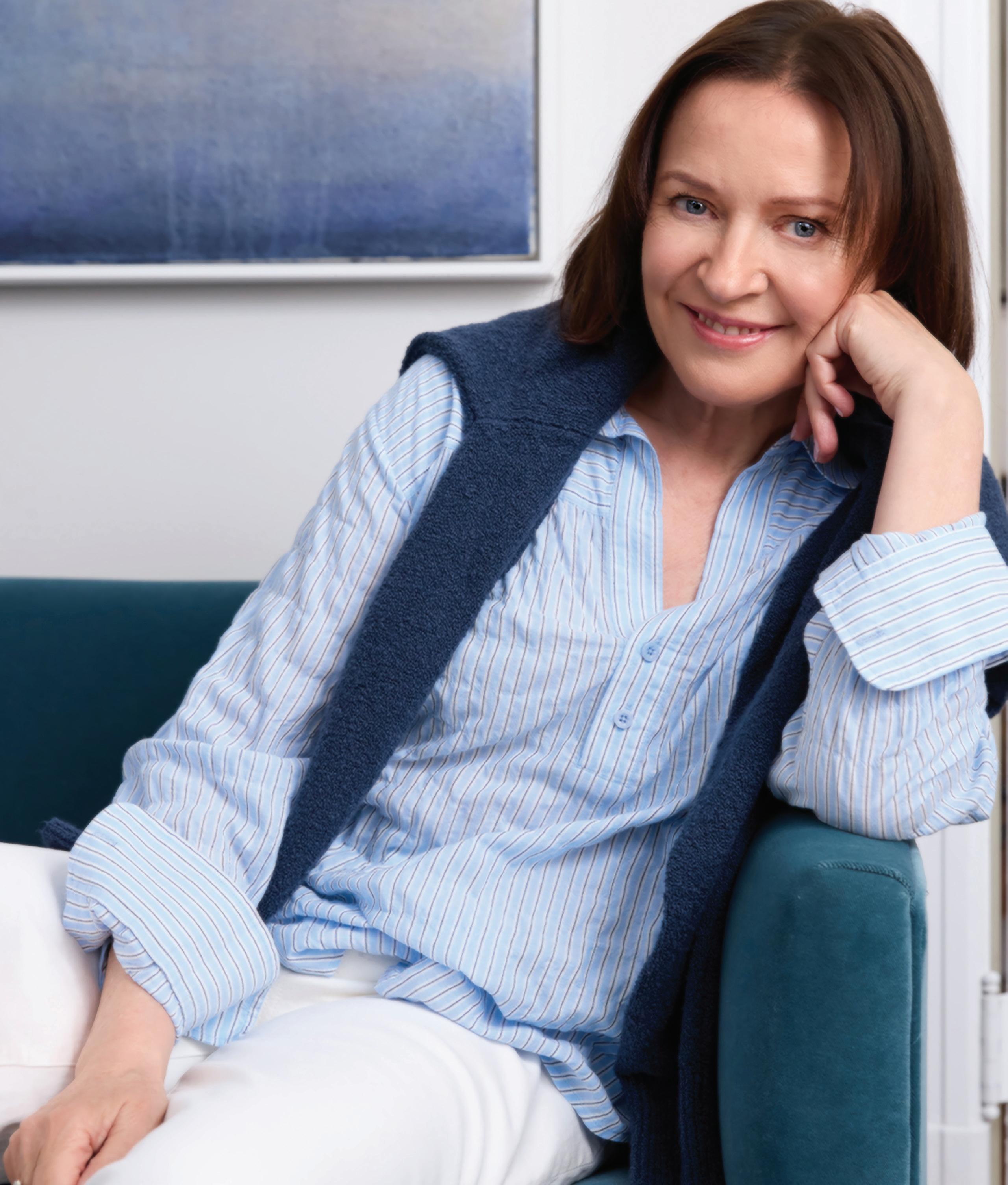
Irish designer Margaret O’Leary established her knitwear label in 1990 locally and now has 13 locations across the country.

had my sweater, the elbows were all completely worn about. Then my mother would put patches in our sweaters. So nothing is left.”
Following the ways of O’Leary’s upbringing, the brand’s sweaters are made with the same long-lasting quality, intended to meld to families’ and generations’ worth of memories.
When O’Leary immigrated to California in her 20s, she began making sweaters for herself and her friends out of her San Francisco bedroom from a single handloom. What was initially a budgetconscious fashion hack became an outlet for the designer to play with her favorite textiles, patterns and colors. While the brand hones in on a classic and timeless aesthetic, O’Leary’s touch leaves each line nothing short of chic.
While the traditional sweaters of her childhood were wool-based, O’Leary has opted to refresh the design with a softer feel, integrating in cottons, yarns, and her favorite, cashmere. Unlike the sheepcolored originals, Margaret O’Leary pieces come in rare fuschias, kale greens, arrays of yellow and always more. “I love color . . . like I dream in color,” she says.
Traveling to Italy throughout the year to source yarns, and keeping a pantone color wheel handy, the designer expresses her love for fashion and understanding that people need wardrobes that spark excitement and confidence, even with classic fashion. Beyond simple sweaters, Margaret O’Leary carries a variety of silhouettes inspired by everything from leather jackets to slacks. She describes the designs as “always relevant, but not of the moment,” assuring timeless yet eyecatching appeal.
The Berkeley store on Fourth Street, O’Leary admits, is her favorite. While the designer resides in Marin, she visits Fourth Street every few months to greet customers. With gratitude for the East Bay community, she says, “A lot of them are collectors there. They have sweaters from 20 years ago because I’ve been doing this a long time.”
O’Leary adds, “The Berkeley people ask a lot of questions. They’re very



thoughtful—they really care about their consumption.”
Directly interacting with customers aligns with Margaret O’Leary’s hands-on philosophy, which is applied before products are even in store. Perfecting fit and promising masterful quality involves a smaller—yet mightier—team than one might imagine. A staff of 11 works in the San Francisco atelier; only three make sweaters, while others are assigned to making shirts or inventory organization, to name a few roles. Running the business smoothly takes a village, yet O’Leary apparel is the product of truly rare experts.
“Knitting is a very special craft with not a lot of people highly skilled at doing it, so I have to outsource to different countries,” she says, mentioning her collaborators in Portugal and Madagascar. Limited batches of handknit pieces are even released throughout the season, especially beloved by collectors.
Also emphasizing the team’s meticulous attention to fit, O’Leary says, “It’s almost like perfecting a menu or making a meal. You’re like, ‘Ooh, a little bit too much oregano,’ and we just tweak it until we fine tune and get that pattern right.” She adds, “All those little perfection details—we call them technical packages—and each sweater has five or six complex Excel spreadsheets of every detail in that sweater.” Designs are sincerely made with the customer and the following generations in mind.
The Margaret O’Leary brand shows that embracing conscious consumption and tradition doesn’t require sacrificing style or a modern outlook. The O’Leary story encourages us to build and strengthen community through the things we love at the moment, as well as the things we’ve outgrown. The shareable, versatile, lasting beauty of Margaret O’Leary’s designs allows us to do just that.
The new Margaret
collection can be shopped online or at the Berkeley or San Francisco store. margaretoleary.com.
Somebody didn't want these things, but they're still good We saved them from being wasted Now we're selling them in our 3-acre store in Berkeley. We're well organized. Come take a look Bring a truck





Doors, windows, sinks, tubs, toilets, lumber, tile, cabinets, hardware, furniture, clothes, art, music, electronics, jewelry, books, housewares, knick knacks, lots of etc.

Open 360 days a year until 5:00PM, 900 Murray St. near 7th x Ashby, Berkeley 510-841-SAVE Come shop







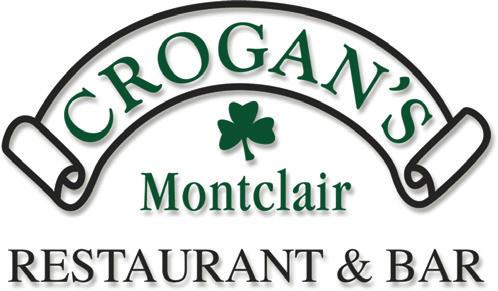


The tagline for Standard & Strange, a specialty clothing shop located in West Berkeley’s Fourth Street neighborhood, is “Own Fewer, Better Things.” Owner Jeremy Smith lives by that philosophy, an ideal that harkens back to early industrial America when “Made in the USA” was synonymous with high-quality, longlasting products.
Ironically, Standard & Strange’s inventory is primarily made up of Japanese and European imports that were inspired by the American blue collar look—denim, boots and leather jackets—all crafted on American machinery that became obsolete when factories modernized their production methods.












BY David R. Newman


INDUSTRIOUS RETAIL Standard & Strange operates three brick-and-mortar stores, in Berkeley, New York City and Santa Fe, alongside an e-commerce shop.

Smith recalls his motivation for opening the store: “I’ve always been interested in how we choose to dress ourselves from a social and holistic perspective. And that led to the questions, ‘Why does everything suck right now? Why are my clothes falling apart? Why do they fit so poorly?’ And that pushed me into learning about manufacturing, sourcing, o shoring, etc.”
Smith and cycling friend Neil Berrett started Cedar Cycling in the early 2000s, selling superior jerseys that are still coveted today. “The problem was I put all my money into product and not enough into marketing,” admits Smith. “I learned that a good product will live forever and leave a mark, but you have to get that product into the market.”
The two decided to gamble and try again, identifying a need for a welcoming
BY

and friendly retail experience selling high-quality basics. In 2012, they turned a tiny, 100-square-foot horse stall in Temescal Alley into a clothing store. The name “Standard & Strange” comes from a passage by author Jane Jacobs, a reaction against urban renewal:
“Cities, however, are the natural homes of supermarkets and standard movie houses plus delicatessens, Viennese bakeries, foreign groceries, art movies, and so on, all of which can be found coexisting, the standard with the strange, the large with the small.”
In 2015, they moved to a larger space on Telegraph Avenue. The following years saw a slow and steady expansion as their loyal customer base grew. They opened a shop in Santa Fe in 2019, followed by a

shop in New York in 2021. In 2024, they moved their East Bay storefront to its current location, formerly a bank. Smith renovated the space himself.
“All of our stores are not new builds,” he explains. “They have wear marks on them. That’s the whole point. New uses for old spaces. It’s about character and neighborhood. It’s the cracks in the economic veneer where we can sneak in, where you don’t have to pay the brutal premium to get in the door.”
Earlier this year, Berrett retired, leaving the business to Smith, who has no plans for growth and is happy with the way things are. So happy, in fact, that he and his family are moving to Japan. “I have great managers, great sta , so I don’t need to physically be here that much,” »

«
Smith says. “And it will really speed things up when I can interact with our vendors directly. For example, I can go to a tannery if I need a leather sample and touch it. I can look at the fabrics in person. All of that.”
It’s an exciting prospect for a shop owner with the intelligence and analytical rigor of a UC Berkeley professor, tattoos and nose ring included. Merchandise is tailored to each store location, and is updated on a weekly basis. “Many of our customers will just buy one thing per year. But it’s something they want more than anything, and that makes me happy. Everything we sell just gets better with age,” he notes.
A huge variety of brands are on offer, including Wonder Looper, featuring prime vintage construction details, and The Real McCoy’s, authentic reproductions of 1940s and 1950s American fashion. Some products can be categorized as “Amekaji,” a Japanese fashion style that combines Japanese aesthetics with classic American workwear.
Smith’s guiding mantra: Is this going to look stupid in 10 years? The store also offers repair and alteration services. And while one can purchase most items online, which saved them during the pandemic, Smith prefers that customers come by in person. “I know e-commerce is growing, but at the end of the day, buying clothes is a social activity. I think Americans have bought into this endless online buying more than any other culture, and as a result have become more isolated,” he says.
It is this desire for truth, this steelyeyed gaze upon the fabric of our lives, that drives Smith, making Berkeley the perfect home for a shop which calls out our greed, a beacon of old fashioned common sense in an ocean of Targets and Amazons and unfettered American commercialism.
And to think it all started with a love for denim.
Standard & Strange, 755 Hearst Ave., Berkeley, 510.373.9696; standardandstrange.com.








BY Janis Hashe


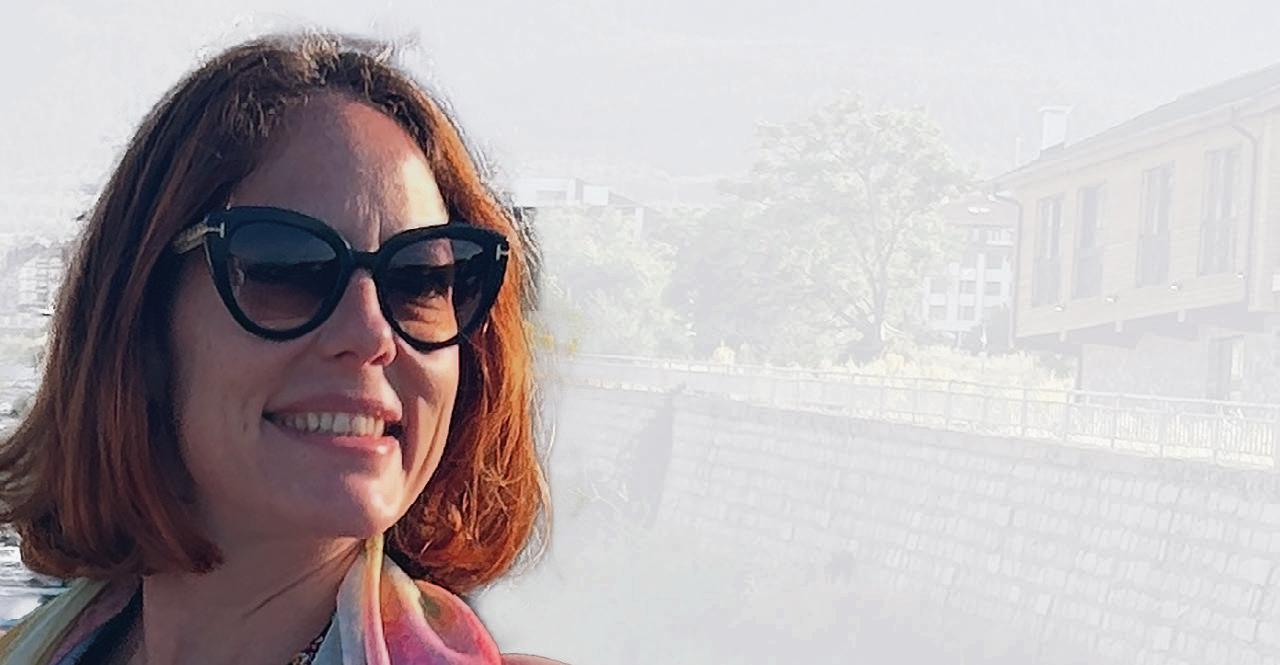








The time for a trip is at hand. But whether it’s a long weekend or a weekslong cruise, the same issue arises: How to create a travel wardrobe that’s stylish, versatile, comfortable—and doesn’t require steamer trunks and porters to transport.
It’s totally possible, said Nora Dunn, “The Professional Hobo.” In 2006, Dunn gave up a career in financial planning to follow her dream of traveling the world. She’s been on the road ever since, becoming one of the original travel bloggers. East Bay Magazine caught up with her by phone from British Columbia.
The first step, she said, is not to make the mistake she did—throwing out all her clothes and buying what she thought was a “travel-friendly” wardrobe. But the clothes didn’t fit her style, and she was miserable in them. “Choose pieces that suit your personal style,” she recommended, but keep in mind certain basics:
Color palette, such as black and white, all neutrals—or whatever one loves. Solid colors are best, and everything will go with everything.
Layers. A tried-and-true travel axiom. “Thinner, longer pieces work best,” said Dunn.
Wrinkle-free. “Grab a handful of the garment and hold for five seconds,” she suggested. “If it’s wrinkled after that, don’t take it.”
Consider the trip’s activities. Long sleeves and a long skirt or dress may be needed to show respect in sacred places, for example.
Born in Berkeley and still manufacturing there, retailer Bryn Walker is known for stylish, modern fashion that is also wearable and comfortable. Kay Casimere-Lopez, manager/buyer for the 4th Street location, said many regular clients frequently shop for travelwear, often looking to add to pieces they’ve had for years. Bryn Walker o ers two yearly design groups, Spring/Summer and Fall/

Winter, so destination-bound customers find clothing that’s right for that season.
Fabrics are often forgiving and flattering on multiple body types, especially the line’s microfiber jersey, which is very popular—and very packable, said Casimere-Lopez.
Bryn Walker is also known for its scarf collection, she said. As will be discussed shortly, scarves are the answer to several travel issues.
On Oakland’s College Avenue, Market has established itself in three years as a favorite among travel-savvy clients. Owner/buyer Jennifer Rego described
her store as focusing on globally sourced lines that “make women feel comfortable and confident.” Among her sources: Rails, Alemais, Alex Mill, Natalie Martin, RIXO, Essentiel Antwerp, Bevy, Le Superbe and Saloni.
Her clients, she said, travel extensively, and are anti-fast fashion, preferring to invest in quality clothing that lasts. She’s seen an uptick in customers buying specifically for travel since the pandemic’s end. It’s not unusual for someone to come in with a trip color palette, such as chocolate brown, or, in one recent case, navy blue and burnt orange, looking
FASHION

for pieces to complement clothing already owned.
Market, like Bryn Walker, is known for its scarves. Rego also pointed to the light nylon bags she carries as very popular travel choices.
Although at home, multiple shoe choices are part of the fun of dressing, for travel, Dunn recommended “two pairs—or at the most, three.” Although this can be tricky, the right choices are key.
“Do not bring shoes that aren’t broken in,” Dunn warned. She’s a fan of shoe line Vivaia, whose designs are stylish and comfortable. A simple pair of black flats
can be dressed up or down.
“A good walking sandal” is also a prime candidate, said Casimere-Lopez.
Rego, whose Market carries the shoe line Freda Salvador, noted, “A good pair of shoes makes any trip.”
Author tips: A pair of black suede ankle boots is very versatile. And East Bay travelers know a great source for travel shoes is Berkeley and Rockridge’s Sole Terra.
Well-planned scarves, bags and jewelry make travel dressing much easier. A big scarf can double as a shawl; a mid-sized one can cover the head in places that require it. A long, rectangular scarf in vivid colors can dress up a plain outfit for a dressier occasion.
Choose a purse, advise the experts,
that works for day—ideally, a neutral color and crossbody for security, and then, a smaller, dressier one for evening. Depending on where the travel destination is, clutches may not be the secure choice.
Simple, non-dangly earrings and/ or necklaces can be packed for daywear, and the bigger pieces can be saved for evening. One should never take anything so precious it would be devastating if lost. They may consider that buying a piece while on the trip makes a wonderful, permanent memory.
We asked our interviewees to name three basics they never pack without.
Nora Dunn: “A pair of pants that can be dressed up and down, a shirt that fits the same criteria and a light jacket or cardigan.”
Kay Casimere-Lopez: “[Bryn Walker] Oliver pant, white blouse, neutral color T-shirt.”
Jennifer Rego: “My favorite ‘elevated’ tennis shoes, black nylon bomber jacket, my favorite skirt or pants.”
“Research the destination: climate, local customs. Respectful dressing means less chance you will be hassled or singled out,” advised Dunn. For colder climes, she is a big fan of merino wool.
“Beauty can be comfortable,” said Casimere-Lopez, “whether going on a cruise or to the grocery store.”
“Try on multiple sizes of pieces,” said Rego. Don’t be obsessed with size; no line’s sizing is the same, she noted. And, customers will sometimes say, “That’s too young for me.” But she encourages them to “give themselves more agency.” In other words, “travel practical” can also be stylish and fun to wear.
Find more tips from Nora Dunn at: theprofessionalhobo.com and youtube.com/NoraDunn.
Bryn Walker, 1799 Fourth St. B, Berkeley. 510-525-9418, brynwalker.com.
Market, 5914 College Ave., Oakland. 415-606-2310, themarketoakland.com.
BY Lou Fancher

Ann Fagan Ginger’s achievements in a lifetime dedicated to establishing, protecting and preserving human rights and international peace laws are nearly unfathomable.
Born July 11, 1925, in East Lansing, Michigan, the Berkeley-based attorney, writer, educator and civil rights expert graduated as one of only eight women in her class from the University of Michigan Law School in 1947. She began her career as administrator at the National Lawyers Guild before practicing labor law in Ohio and Boston, where she and her thenhusband during the McCarthy era refused loyalty oaths and were barred for 20 years from practicing law.
The barriers thrown up in the 1950s did nothing to stop Ginger’s momentum, which carried her to New York City and led to
actions taken to dismantle McCarthyism.
Among other examples, in 1959 she argued and won Raley v. Ohio before the U.S. Supreme Court and earlier, in 1955, launched the Civil Liberties Docket, an archive of civil rights litigation still widely used by lawyers and activists worldwide.
In 1965, having relocated with her family to California, Ginger founded the Meiklejohn Civil Liberties Institute in Berkeley. The MCLI is named after Alexander Meiklejohn, an educator and political philosopher Ginger held in high esteem for his First Amendment advocacy during the Cold War. The organization’s umbrella of programs and services cover legal research, education, advocacy, training for interns and volunteers, and publication of works that serve as crucial amicus briefs used in the courts.
Ginger died at home in Berkeley on
In 1955, Ann Fagan Ginger launched the Civil Liberties Docket, an archive of civil rights litigation still widely used by lawyers and activists worldwide.
Aug. 20, 2025. At age 100, her firepower and visibility had scaled down during the last five years, but her remarkable inducement had in no way ceased, according to longtime friend and colleague Jennifer Smith.
“I met Ann when I applied to work for her at MCLI,” Smith recalls in a phone interview. “I was a college student and worked there, off-and-on for about five years. It was a small, grassroots nonprofit, so I worked side-by-side with Ann. I’d walk into the office, and she’d start asking, ‘Is this done? Is that done?’ And then she’d jokingly say, ‘I guess I should start with how are you?’ Her mind was constantly active, thinking about new ways to promote justice, do activism.”
Smith is now 43 and a psychotherapist with a private practice. As a foreveradmirer of her former boss, it presents »
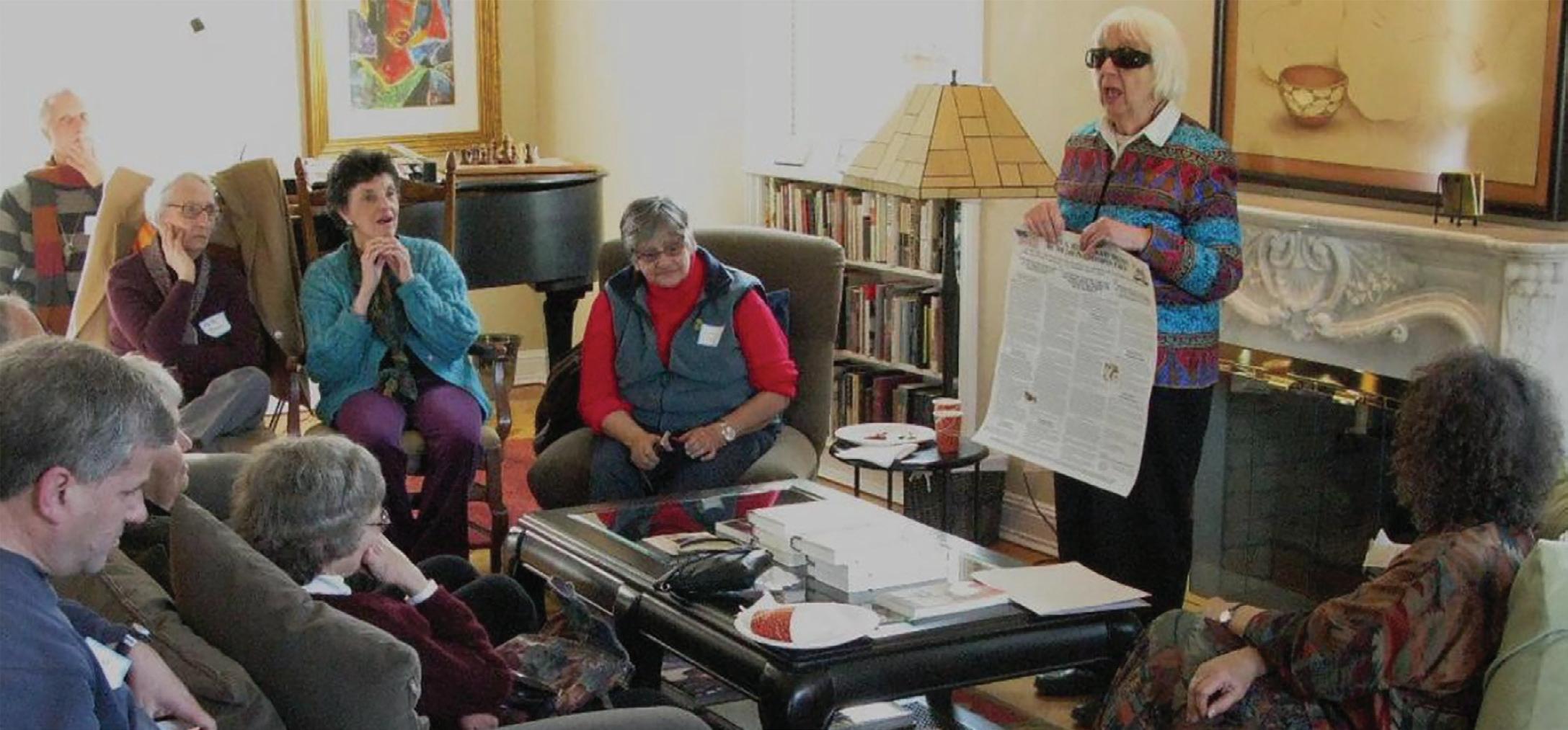
‘Other than the McCarthyism she fought against, most remarkable is the digest (Civil Liberties Docket) she created. There is no way civil rights cases are won without the documents she collected that had never been published.’
— JENNIFER SMITH
obligated to enforce them in this country. She sent reports alerting organizations that oversee international laws of the transgressions in the United States of racial laws and environmental violations that occurred during Hurricane Katrina, and other incidents.
a challenge to select highlights that best exemplify Ginger’s impact on international peace law, the fight to preserve human rights and social justice issues such as free speech, peaceful protest, and e orts made in public and in the courts to illuminate and eradicate racial violations of domestic and international peace laws, and more.
“In recent years, Ann was not focused on one issue, but on holding the U.S. accountable to treaties that cover race, gender, sexuality and a lot of other topics,” says Smith.
“Other than the McCarthyism she fought against, most remarkable is the
digest (Civil Liberties Docket) she created. There is no way civil rights cases are won without the documents she collected that had never been published. She sent it out to subscribing lawyers, giving them a way to win cases and tune into other lawyers about how to build a legal strategy. That was a major contribution to the field in a time when arguments had to be created without the First Amendment and other protections,” she continues.
Ginger also thought in uniquely individual patterns, which caused her to realize that the United States, by ratifying international human rights laws, was
Ginger in her private life was the mother of two sons, Thomas Ginger, a lawyer who died in 1998 from multiple sclerosis complications, and James Ginger, of Berkeley. Although two marriages ended in divorce, Smith says Ginger’s 20-year companion, J.R. “Richard” Challacombe, a writer, photographer, journalist and environmentalist who died in 2020, provided constant support throughout their “long, deep, deep love a air.”
A memorial service will be held (and livestreamed) in honor of United Nations/ Human Rights Day, a day Ginger deeply cherished. The service is planned for Saturday, Nov. 29, at 2:30pm, at Berkeley Unified Fellowship, 1924 Cedar St.
A celebration of Ginger’s life will be held on Saturday, June 6, 2026, at 2:30pm at the Berkeley Fellowship of Unitarian Universalists. Details will be announced on the church’s website (bfuu.org) and on the MCLI website (mclihumanrights.org). A tribute page where donations to the Ann Fagan Ginger Legacy Fund may be made supports publication of her work, including an upcoming memoir, and invites people to share memories, stories and photos: everloved.com/life-of/ann-ginger.

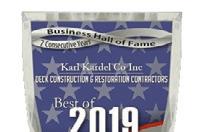


•
•
So-called







